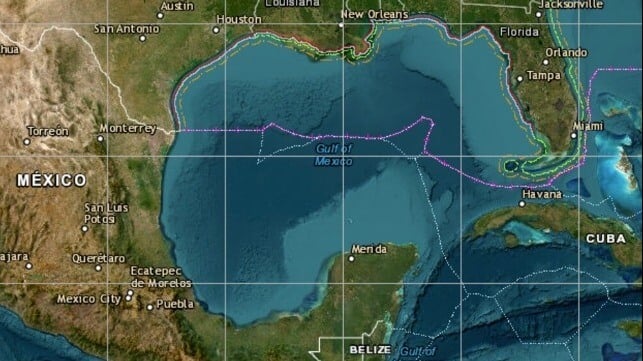Trump Proposes Renaming Gulf of Mexico as "Gulf of America"

At a news conference Tuesday, President-elect Donald Trump suggested that his administration would try to rename the Gulf of Mexico, a name dating back to the Spanish conquistadores who first colonized the region in the 1500s.
In a brief comment amidst a press conference on other economic and security matters - including the potential annexation of Greenland and Panama - Trump told reporters that he would like the body of water to be named the "Gulf of America" because "we do most of the work there and it's ours."
"We’re going to be changing the name of the Gulf of Mexico to the Gulf of America, which has a beautiful ring," Trump declared during a Tuesday press conference from Mar-a-Lago. "That covers a lot of territory. The Gulf of America, what a beautiful name - and it's appropriate. It's appropriate."
The announcement was a footnote in the press conference, and Trump did not elaborate on the source of the idea. The name has been proposed before, but never seriously: The last instance in recent political history was in 2012, when a Democratic congressman from Mississippi suggested renaming the Gulf of Mexico as the "Gulf of America" to mock anti-immigration proposals.
The gulf's name dates back to the Spanish conquests of the early 1500s, when it was known as the Golfo de Nueva Espana or the Golfo de Mexico. Aside from indigenous inhabitants, it was an exclusively Spanish domain for more than 150 years, until the arrival of the French explorers who settled Louisiana. The current U.S. coastline developed another 100-150 years later with the Louisiana Purchase in 1803, the acquisition of Florida from Spain in 1819, and Texas' independence from Mexico in 1836.
Today, the U.S. exclusive economic zone covers about 44 percent of the surface of the Gulf of Mexico, and U.S. states account for nearly half of the Gulf's coastline. Both Mexico and the U.S. have similar offshore oil production figures in the Gulf of Mexico, thanks to the abundant resources off Texas and Louisiana and the superlarge fields in Mexico's Bay of Campeche.
